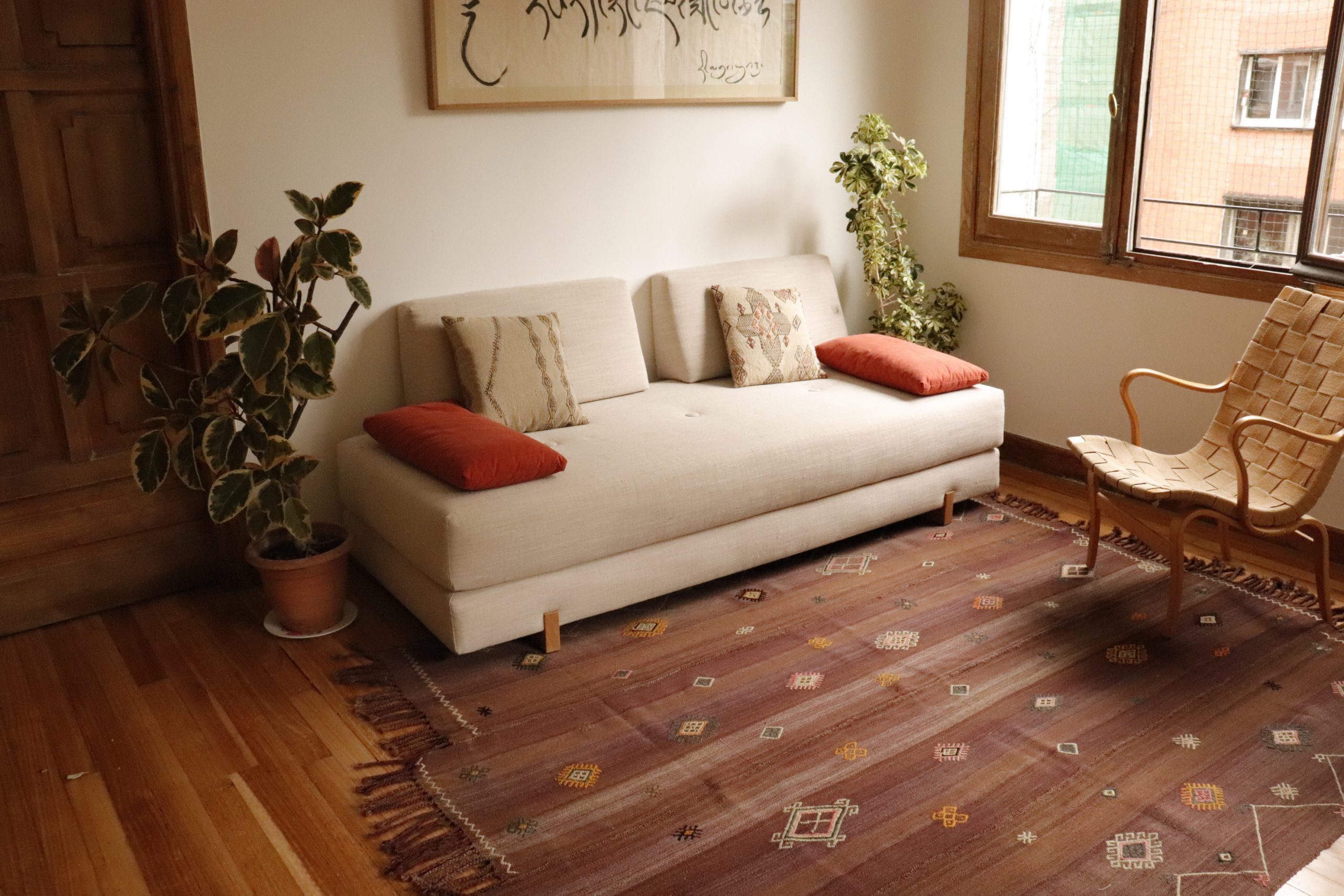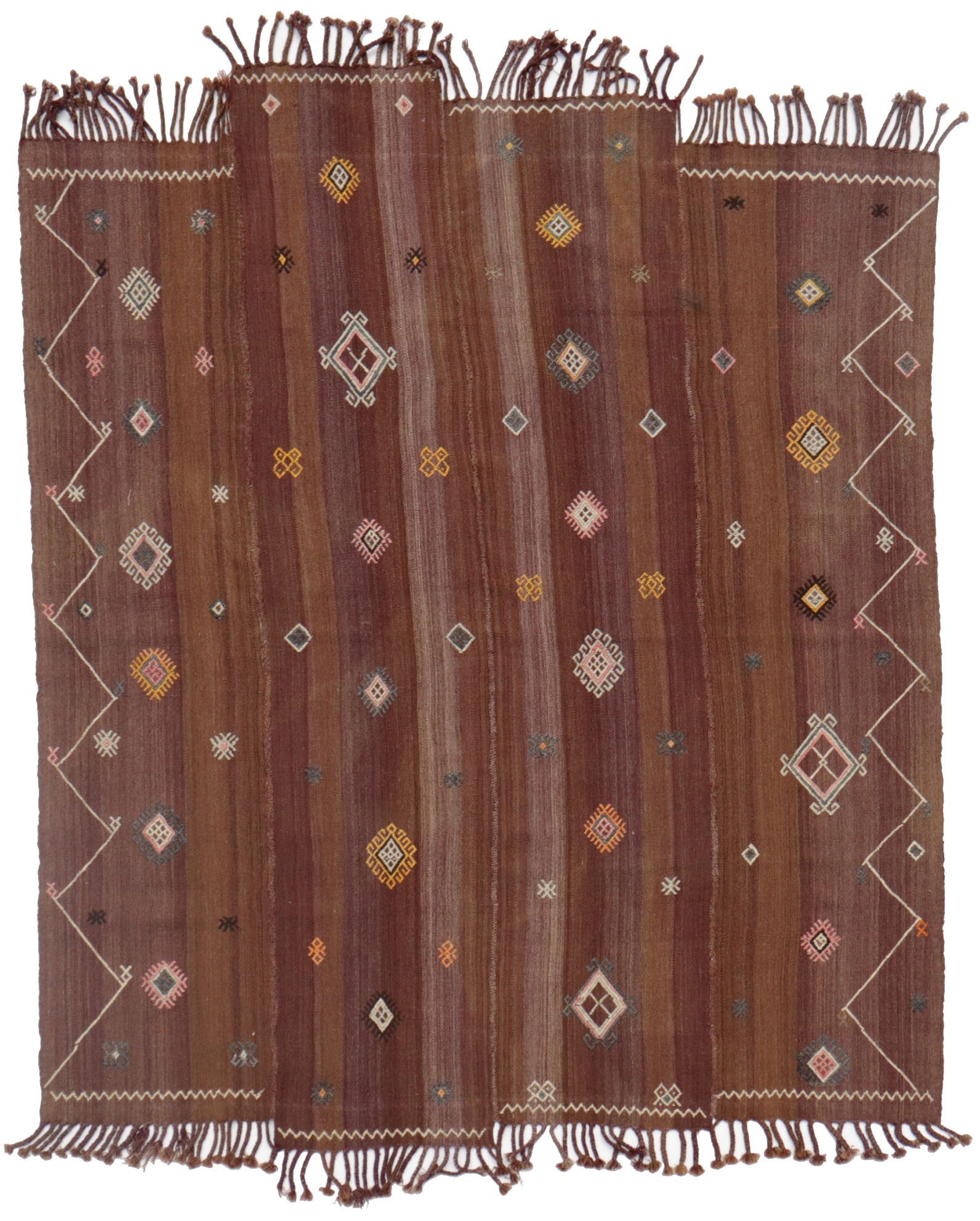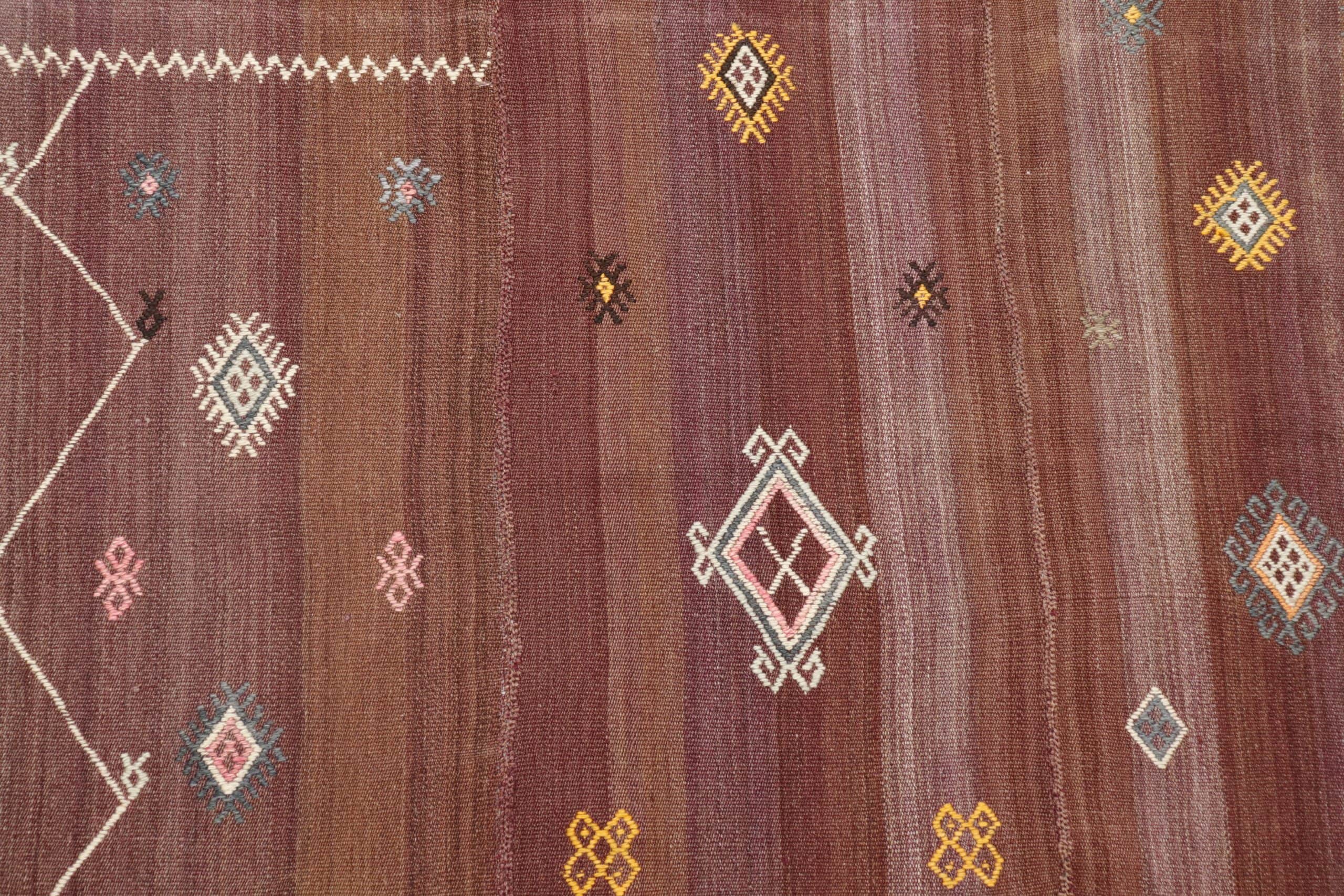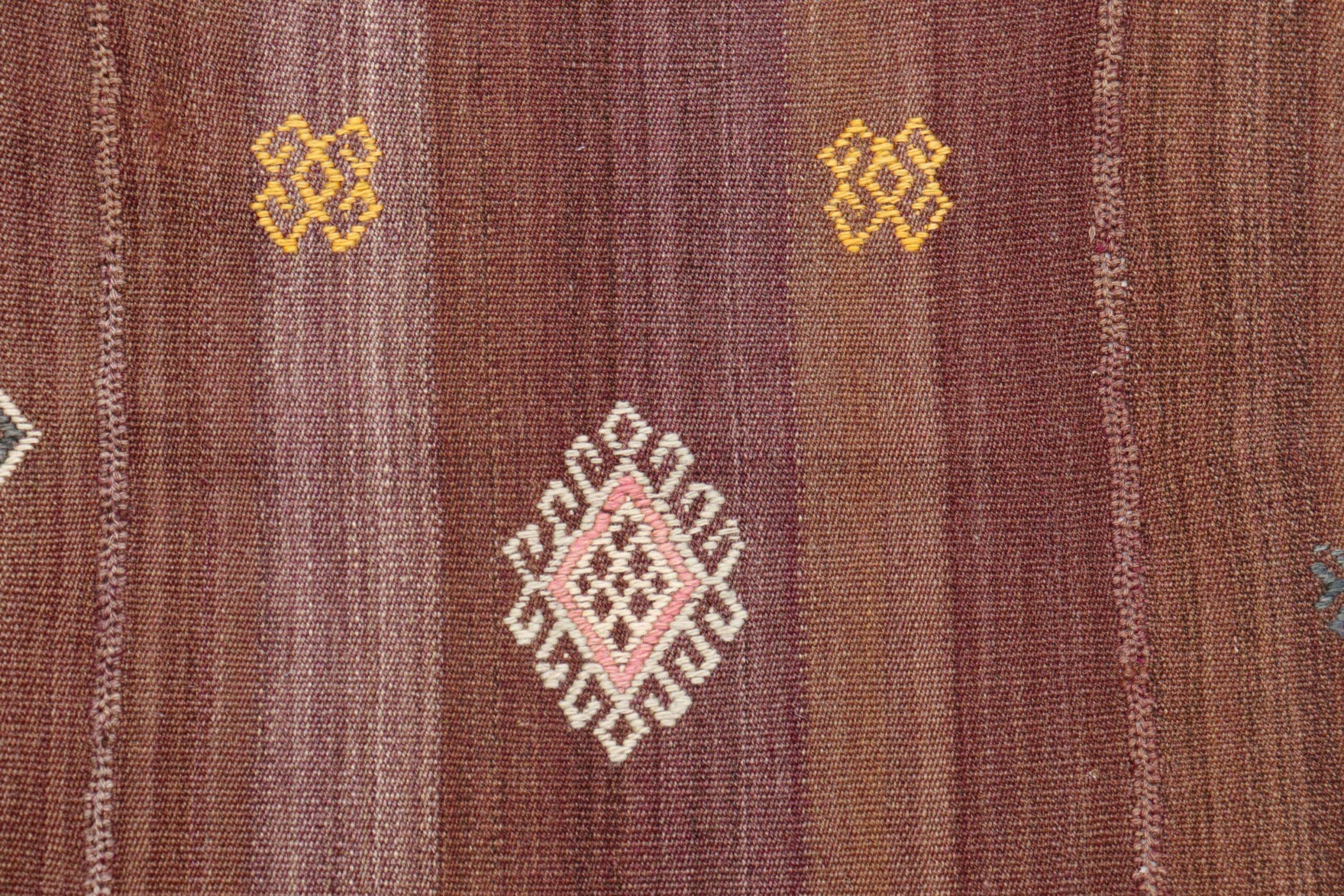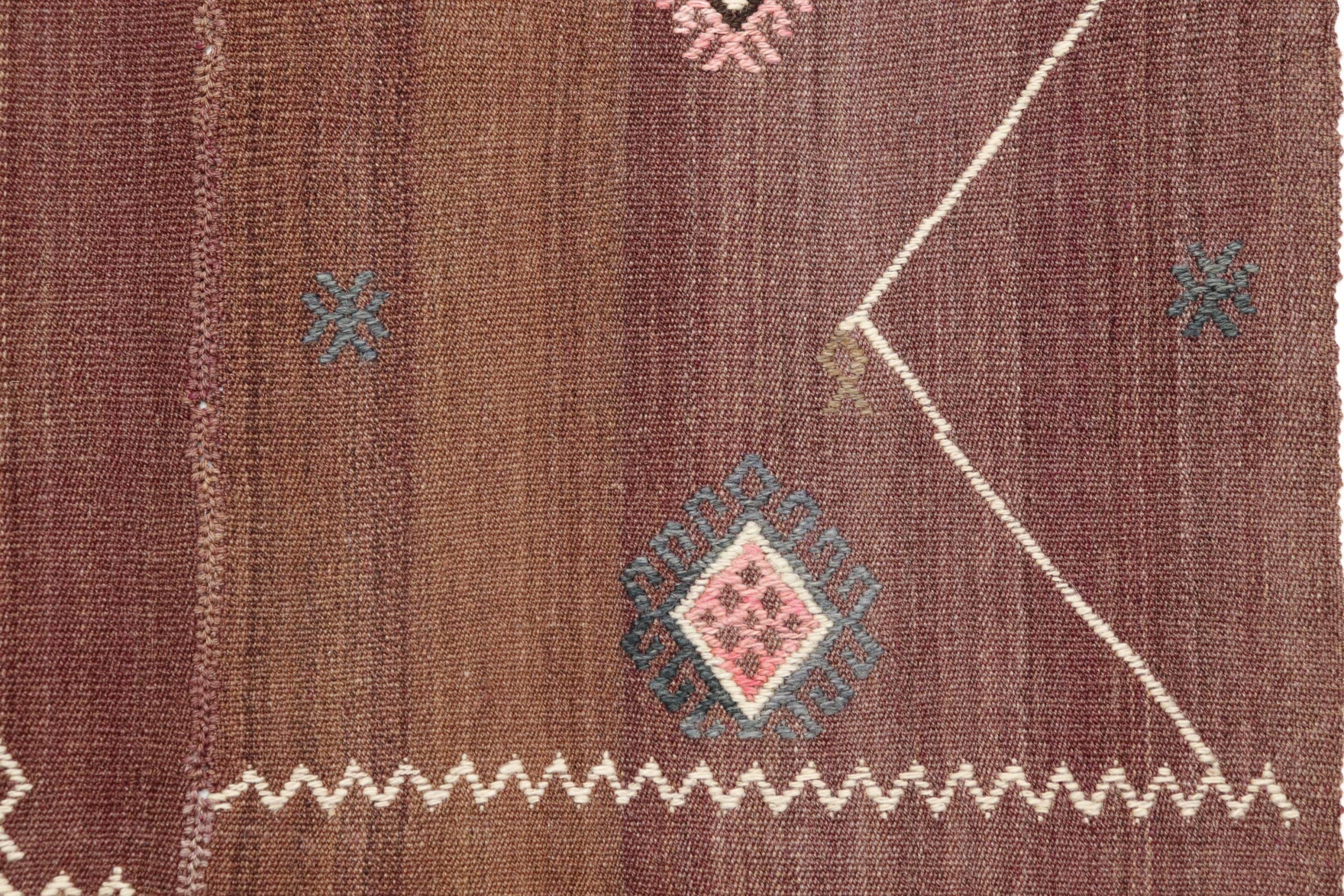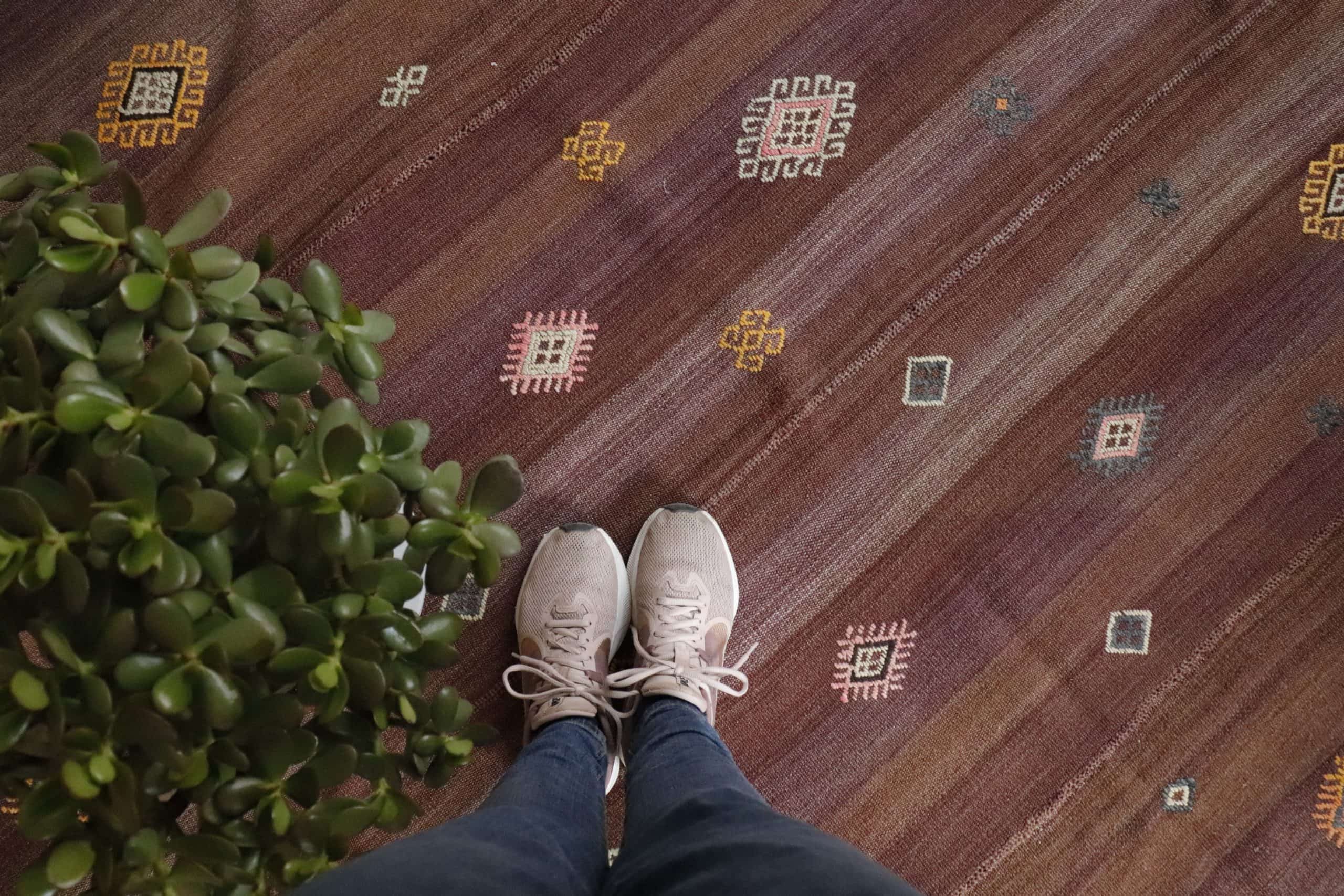980.00 €
This mysterious vintage kilim is made in narrow bands that have come together to create a unique and very different kilim. The background is a single color, but by having “abrash” or changes in color and gradations, it gives it depth. The entire field is full of “pitrak” motifs, woven in the cicim technique. ‘Pitrak’ is Turkish for ‘thistle’, but its origin has been lost over time and it probably has a solar origin. It could be understood more as the representation of a plant, more than a thistle and therefore, it would symbolize fertility, just like when an ear of wheat or a pomegranate is represented. This kilim is an exceptional piece with character.
Material: 100% hand-spun sheep wool
Size: 226×180 cms
Origin: Dogubayazit, Turkey
Date of weaving: 1950s
Dogubayazit is well to the east of Turkey, almost on the border with Iran and Armenia, at the foot of the iconic Mount Ararat, the same one that you can see on the other side from Yerevan, Armenia, and the subject of many struggles to be considered by Armenians part of its territory (Armenia at one time in the past was larger and this area was Armenian territory). Most of the population is Kurdish.
1 in stock
Additional information
| Weight | 5.9 kg |
|---|
Subscribe and receive the lastest news
